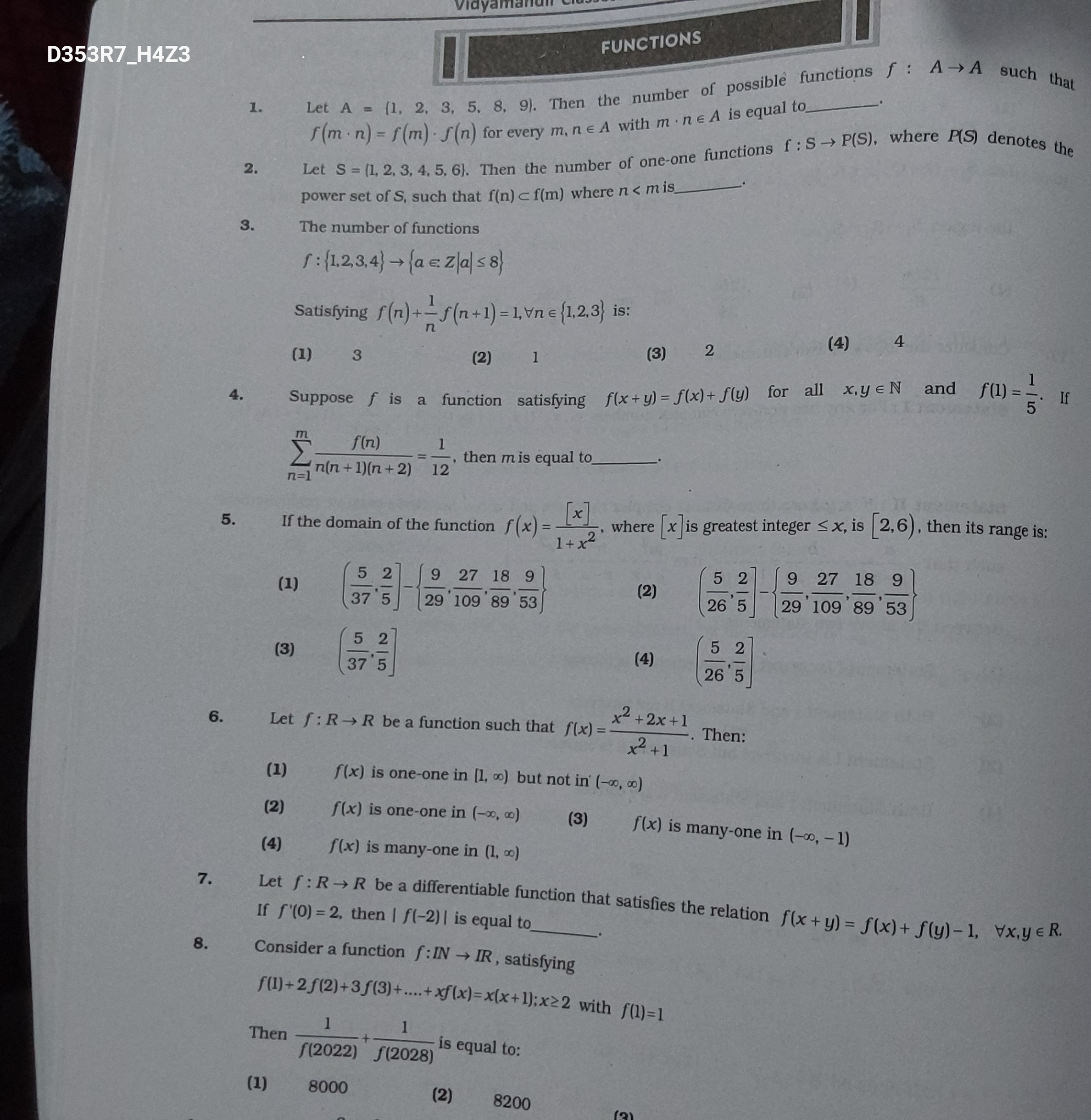Question
Question: Let A = {1, 2, 3, 5, 8, 9}. Then the number of possible functions $f: A \rightarrow A$ such that $f(...
Let A = {1, 2, 3, 5, 8, 9}. Then the number of possible functions f:A→A such that f(m⋅n)=f(m)⋅f(n) for every m,n∈A with m⋅n∈A is equal to .

433
Solution
The given condition is f(m⋅n)=f(m)⋅f(n) for m,n,m⋅n∈A. The set is A={1,2,3,5,8,9}.
-
Consider m=1 or n=1: For any x∈A, 1⋅x=x∈A. So, f(x)=f(1)⋅f(x). This implies either f(x)=0 for all x∈A, or f(1)=1.
- Case 1: f(1)=0. If f(1)=0, then for any x∈A, f(x)=f(1)⋅f(x)=0⋅f(x)=0. So, f(x)=0 for all x∈A. This is one valid function.
- Case 2: f(1)=1. This condition f(x)=f(1)f(x) becomes f(x)=f(x), which gives no further restriction on f(x) for x=1.
-
Consider other products in A: We list all pairs (m,n) such that m,n∈A and m⋅n∈A. The only non-trivial product is 3⋅3=9. Both 3 and 9 are in A. So, f(9)=f(3)⋅f(3)=(f(3))2.
-
Analyze f(9)=(f(3))2: Since f:A→A, f(3) must be an element of A, and (f(3))2 must also be an element of A. Let y=f(3). Then y∈{1,2,3,5,8,9}. We require y2∈{1,2,3,5,8,9}.
- 12=1∈A. So f(3)=1 is possible, which implies f(9)=1.
- 32=9∈A. So f(3)=3 is possible, which implies f(9)=9. Other squares (22=4,52=25,82=64,92=81) are not in A. Thus, if f(1)=1, f(3) can only be 1 or 3.
-
Count the functions for f(1)=1:
- Subcase 2a: f(1)=1 and f(3)=1. This implies f(9)=(f(3))2=12=1. The values f(1)=1, f(3)=1, f(9)=1 are fixed. For the remaining elements x∈{2,5,8}, f(x) can be any element of A. There are 6 choices for f(2), 6 for f(5), and 6 for f(8). Number of functions = 1×1×6×6×6=216.
- Subcase 2b: f(1)=1 and f(3)=3. This implies f(9)=(f(3))2=32=9. The values f(1)=1, f(3)=3, f(9)=9 are fixed. Similarly, f(2),f(5),f(8) can be any element of A. Number of functions = 1×1×6×6×6=216.
-
Total Number of Functions: Total = (Functions with f(1)=0) + (Functions with f(1)=1,f(3)=1) + (Functions with f(1)=1,f(3)=3) = 1 + 216 + 216 = 433.
